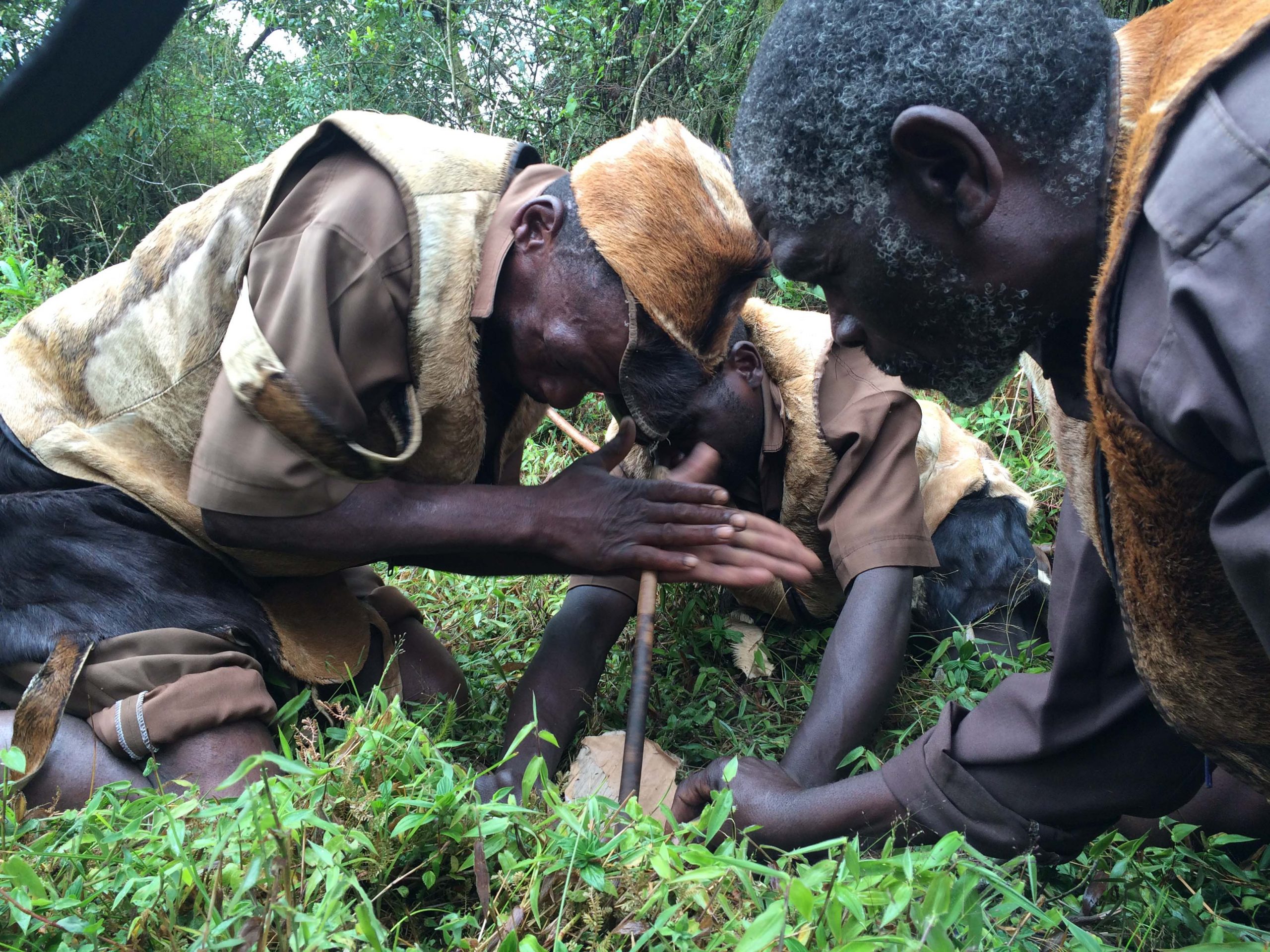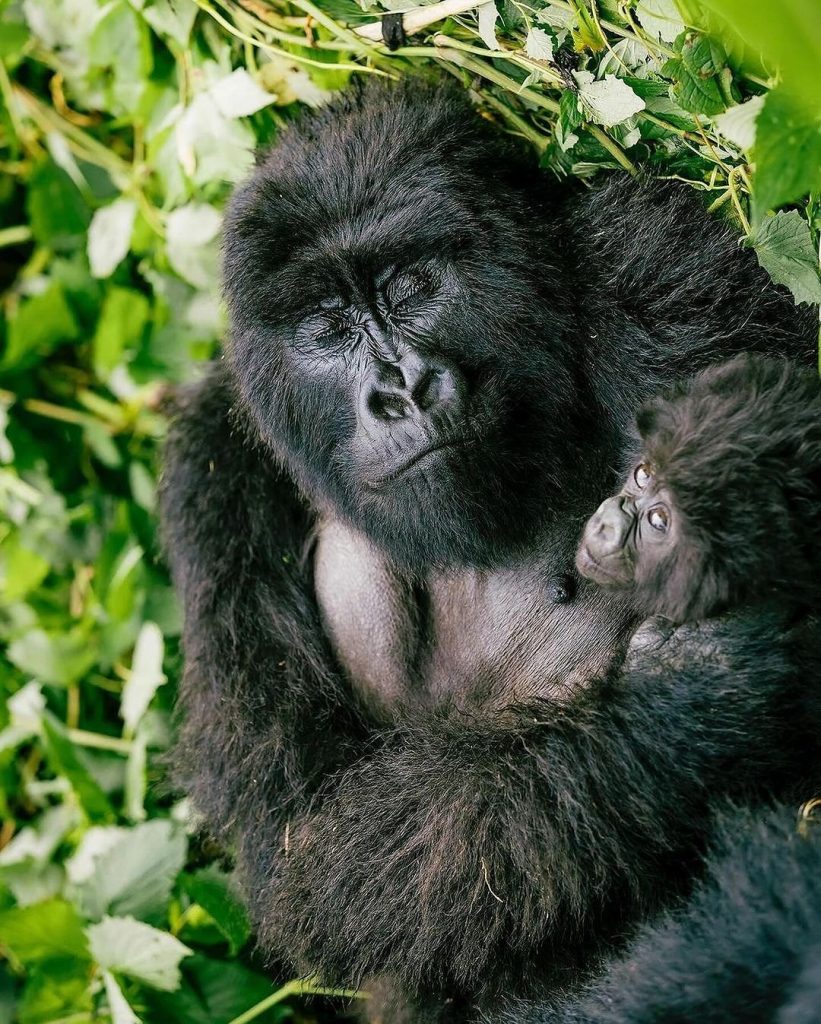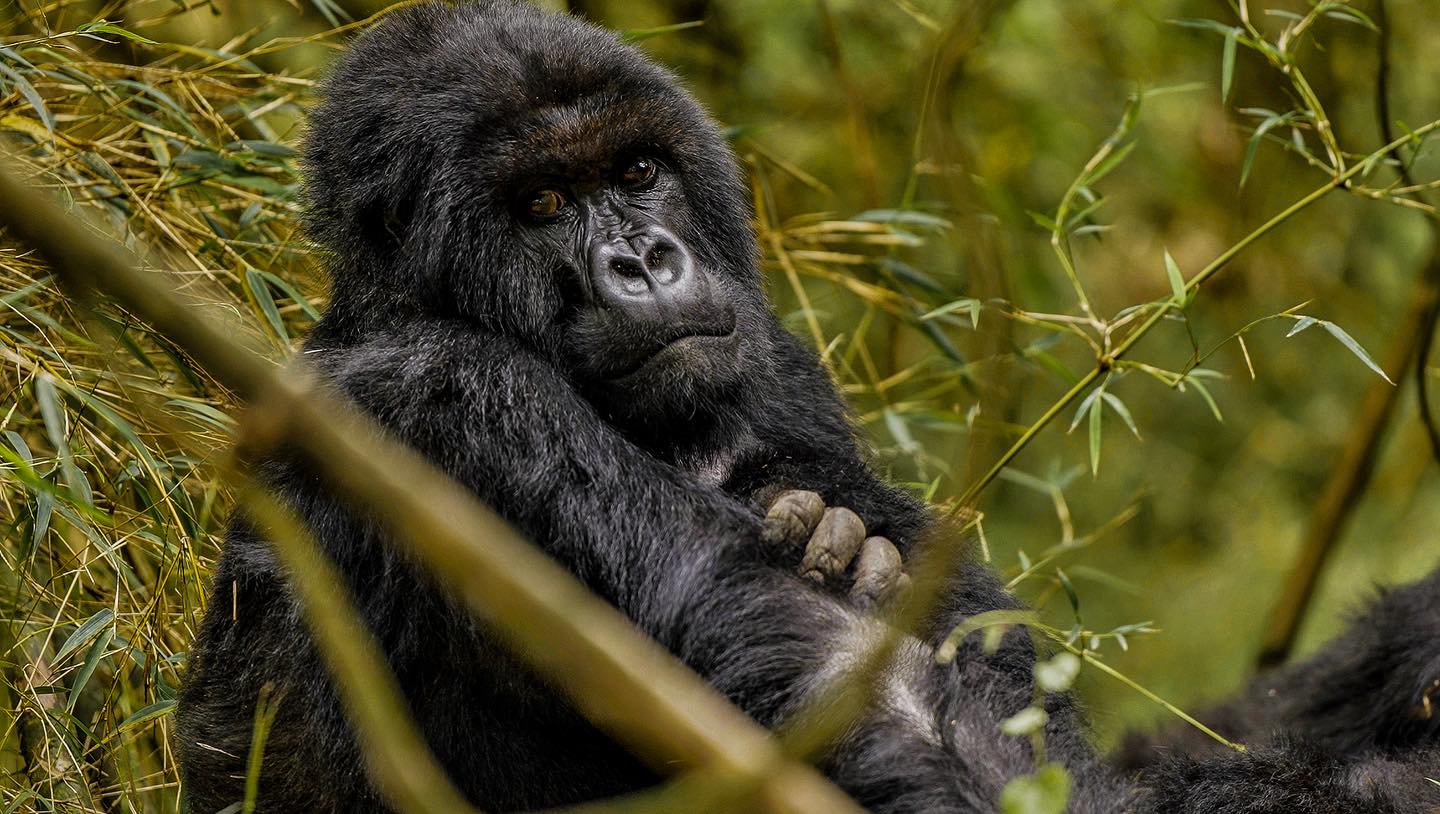Gorilla Trekking: A Complete Guide for First-Timers. Book your trekking safari now!
Table of Contents
Is Gorilla Trekking Worth the Money?
Gorilla trekking is absolutely worth the cost. This once-in-a-lifetime experience allows you to witness the majestic mountain gorillas in their natural habitat, all while contributing directly to conservation efforts. The funds from your trek support anti-poaching efforts, local communities, and the preservation of gorilla habitats. For wildlife lovers and eco-conscious travelers, the financial investment is balanced by the transformative nature of the trek.
For added value, consider combining your trek with a cultural experience. For instance, visiting the Batwa pygmy communities in Uganda provides a unique opportunity to learn about their history and culture, adding depth to your gorilla trekking adventure.
Gorilla Trekking: A Complete Guide for First-Timers

How Safe is Gorilla Trekking?
Gorilla trekking is considered safe when you follow your guide’s instructions and respect the safety protocols. The gorillas you visit are habituated to human presence, and experienced rangers accompany every trek to ensure both your safety and the gorillas’ well-being. Rangers are trained to handle various situations, and gorillas, although wild, are accustomed to human contact.
If you’re worried about safety or physical strain, hiring a porter can enhance your experience. Porters can help carry your gear, assist with tricky terrain, and contribute to local communities by providing them with employment opportunities. Understanding how to prepare for a gorilla trekking adventure can significantly impact your comfort and safety.
What is Gorilla Trekking Like?
Gorilla trekking is an exhilarating experience that involves hiking through dense forests, often across steep and uneven terrain. Treks can range from one to six hours, depending on the location of the gorilla family you’re visiting. Once you find the gorillas, you’ll have an hour to observe them as they interact, feed, and go about their daily lives.
For those looking for a less strenuous trek, consider gorilla trekking in Rwanda, where the gorilla families are often located closer to the park entrance. This can make the trek easier and shorter, perfect for those who prefer a gentler hike.
Where to Go Gorilla Trekking in Africa?
Africa offers three primary destinations for gorilla trekking: Uganda, Rwanda, and the Democratic Republic of Congo (DRC). Uganda and Rwanda are the most popular and safest options, with Uganda being more budget-friendly and Rwanda offering a more luxury-oriented experience. If you’re considering the best places for gorilla trekking in Africa, both countries have their unique advantages.
If you’re seeking a more tranquil, off-the-beaten-path experience, consider visiting Mgahinga Gorilla National Park in Uganda. Although smaller than Bwindi, Mgahinga provides excellent trekking with fewer tourists and the opportunity to see golden monkeys as well. Take a look at our top luxury African Safari Destination Uganda’s national parks
Gorilla Trekking in Uganda
Uganda is one of the best destinations for gorilla trekking, especially in Bwindi Impenetrable Forest and Mgahinga Gorilla National Park. With nearly half of the world’s mountain gorilla population residing here, Uganda offers an unparalleled trekking experience.
After your gorilla trek, you can extend your adventure by visiting Queen Elizabeth National Park or Kibale Forest. These parks offer exciting wildlife experiences, including chimpanzee tracking and safari game drives, which provide a more comprehensive Ugandan wildlife tour.

Link to the Uganda Wildlife Authority for additional resources.
Gorilla Trekking Permits in Uganda: How to Get One?
A gorilla trekking permit in Uganda costs $800 for foreign tourists, $700 for foreign residents, and 300,000 Uganda Shillings for East African citizens. The permits are limited to ensure the safety and well-being of the gorillas, so booking well in advance is essential—especially during the high seasons of June to September and December to February. Knowing the gorilla trekking permit booking process in Uganda can save you time and hassle.
If you’re traveling during the wet season, when there are fewer tourists, you might find permits more readily available. Tour operators can sometimes secure last-minute permits due to cancellations, making this a good option for spontaneous travelers.
What to Wear for Gorilla Trekking?
When preparing for your gorilla trek, it’s crucial to dress appropriately. Wear long-sleeved shirts and pants to protect yourself from scratches, insect bites, and the thick forest undergrowth. Waterproof hiking boots are essential for navigating the often muddy terrain. Be sure to pack a rain jacket and a hat, as the forest is frequently damp, even in the dry season.
Gaiters are useful for keeping mud, water, and insects out of your boots, especially during the wet season. Gloves can also be handy for gripping vegetation and keeping your hands clean during steep climbs.
Why is Gorilla Trekking So Expensive?
The high cost of gorilla trekking permits helps fund crucial conservation initiatives. These fees are used to protect gorilla habitats, fund anti-poaching patrols, and provide vital support to local communities. In return, these communities are encouraged to protect the gorillas, creating a sustainable conservation model. Understanding why gorilla trekking is so expensive can help you appreciate the value of your experience.
You can also explore volunteering opportunities with wildlife conservation organizations. Many programs allow you to directly contribute to conservation efforts while sometimes offering reduced fees or longer stays for volunteers.
Best Time for Gorilla Trekking in Uganda and Rwanda
Gorilla trekking is one of Africa’s most unique and unforgettable wildlife experiences. For those planning to visit Uganda or Rwanda for gorilla trekking, knowing the best time to go can make all the difference in ensuring a comfortable and successful trek.
Best Time for Gorilla Trekking in Uganda
In Uganda, the best time for gorilla trekking is during the country’s two dry seasons: June to September and December to February. During these months, the trails in Bwindi Impenetrable Forest and Mgahinga Gorilla National Park are much easier to navigate, and the weather is relatively favorable for trekking. The dry conditions also offer better visibility and make the experience more enjoyable, as gorillas are easier to track.
However, if you prefer a quieter and more budget-friendly experience, consider visiting during the off-peak rainy months of March to May or October to November. While there will be more rain, leading to slightly muddier trails, these months offer fewer tourists, making it an ideal time for those looking for a more personalized, intimate experience.
Best Time for Gorilla Trekking in Rwanda
Rwanda’s gorilla trekking conditions are very similar to Uganda’s. The best time for trekking in Volcanoes National Park is also during the dry months of June to September and December to February, as these months offer optimal trekking conditions with minimal rain. The dry season allows for easier access to the gorillas and provides a more comfortable experience.
Visiting Rwanda in the rainy season (March to May, or October-November) can be a bit more challenging due to slippery trails, but it comes with the perk of fewer crowds, making it perfect for those seeking a more private trekking experience.
Can Kids Do Gorilla Trekking?
Children under 15 years old are generally not allowed to participate in gorilla trekking. This age restriction helps ensure both the safety of the children and the gorillas. Younger children may not have the physical stamina required for the trek, and their presence could potentially disturb the gorillas.
For families traveling with children, consider alternative activities like nature walks, visiting cultural sites, or going on safari in nearby parks. Uganda and Rwanda offer family-friendly wildlife experiences, such as chimpanzee tracking or game drives in Queen Elizabeth National Park, that can be just as rewarding.
Private Gorilla Trekking: A Personalized Experience
For those looking for a more exclusive and tailored experience, private gorilla trekking is the perfect option. This allows you to trek with just your group, avoiding the crowds and ensuring a more intimate and personalized wildlife encounter. Private treks often include specialized guides and a more flexible itinerary, giving you more control over the pace of the trek and allowing for additional time to observe and photograph the gorillas.
Whether you choose to trek in Uganda’s Bwindi Forest or Rwanda’s Volcanoes National Park, a private gorilla trek ensures a unique, undisturbed experience. It’s particularly beneficial for those who want more privacy or are trekking for special occasions like anniversaries or honeymoon trips.
Family-Friendly Gorilla Trekking: An Adventure for All Ages
For families, family-friendly gorilla trekking is an ideal way to introduce children and young adults to the wonders of nature. Both Uganda and Rwanda offer family-friendly trekking options with a focus on ensuring safety, comfort, and fun for young trekkers.
In Uganda, families can opt for shorter treks, especially in areas like Kibale National Park, where the trails are slightly easier to manage. Rwanda’s Volcanoes National Park also caters to families, and there are specific treks designed to accommodate young children, with the emphasis on shorter durations and more manageable treks.
When planning a family trek, it’s essential to note that gorilla trekking regulations generally require trekkers to be at least 15 years old, but some parks make exceptions for younger trekkers with the proper health and fitness requirements. Families looking to share a once-in-a-lifetime adventure will be able to enjoy the gorilla trekking experience at a relaxed pace, with the added joy of bonding over such an extraordinary adventure.
Additional Tips:
- Trekking conditions: The dry seasons (June to September, December to February) are ideal, but if you don’t mind a bit of rain, the off-peak months can offer fewer crowds and reduced prices.
- Health considerations: Remember that gorilla trekking is physically demanding. While the treks in Uganda and Rwanda are not overly long, they can be challenging, especially for younger children or older adults. Always consult with your tour operator about the suitability of the trek for your group.
- Permits: The cost of gorilla trekking permits varies based on the season. During peak months, permits are priced higher, so it’s important to book in advance, especially if you’re planning a private trek or family-friendly trip.
FAQ’s: Common Questions About Gorilla Trekking
How much does a gorilla trekking permit cost?
A gorilla trekking permit in Uganda costs $800 for foreign tourists, $700 for foreign residents, and UgX 300,0000 for East African citizens.
Is gorilla trekking safe for children?
No, children under 15 are generally not allowed to trek with gorillas due to safety concerns.
What should I wear for gorilla trekking?
Wear long sleeves, long pants, and waterproof hiking boots, and pack a rain jacket, gloves, and gaiters to prepare for the trek.
Can I see other wildlife while gorilla trekking?
Yes, you can encounter various wildlife species, including birds, monkeys, and other mammals, especially in Uganda’s national parks.
What is the best time to go gorilla trekking?
The best time for gorilla trekking is during the dry seasons from June to September and December to February.
Conclusion
Gorilla trekking offers a profound connection with nature and a chance to contribute directly to conservation. Whether you choose Uganda, Rwanda, or the DRC, the experience is worth the investment of both time and money. Plan your trip early, dress appropriately, and consider extending your adventure with cultural experiences or additional wildlife safaris for a truly unforgettable journey. With proper planning and knowledge, you’ll be ready for an incredible gorilla trekking experience.

Thank you for your articles. They are very helpful to me. Can you help me with something?
May I request that you elaborate on that? Your posts have been extremely helpful to me. Thank you!